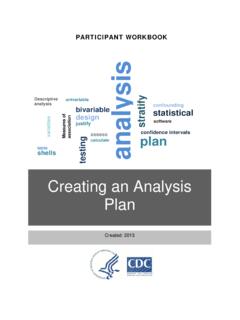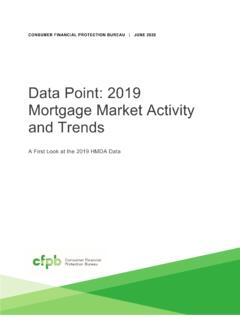Transcription of Triennial Analysis of SCRs 2011-2014 - Pathways to harm ...
1 Pathways to harm, Pathways to protection: a Triennial Analysis of serious case reviews 2011 to 2014. Final report May 2016. Peter Sidebotham*, Marian Brandon**, Sue Bailey**, Pippa Belderson**, Jane Dodsworth**, Jo Garstang*, Elizabeth Harrison*, Ameeta Retzer* and Penny Sorensen**. *University of Warwick **University of East Anglia Acknowledgements The research team would like to extend our thanks to the Department for Education for their funding, support and careful overseeing of this study, particularly Stephanie Brivio, Helen Walker, Ivan Wintringham and John Leppard. We are most grateful to all members of the advisory group, who generously gave their time and expertise to respond to, and comment on, drafts of this report, and to meet with the authors. The members of the advisory group were: Alan Bedford (Consultant and serious case review author).
2 Susannah Bowyer (Research in Practice). Ian Dean (Local Government Association). Anne Gair (Ofsted). Kevin Harrington (Consultant and serious case review author). Jane Held (Association of Independent LSCB Chairs). Philip Noyes (NSPCC). Janet Pickles (LSCB Innovation Programme Learning into Practice project). Catherine Powell (University of Southampton; consultant and serious case review author). Wendy Rose (Cardiff University). Isabelle Trowler (Chief Social Worker for Children and Families). Alex Walters (Association of Independent LSCB Chairs). Richard White (DfE). Particular thanks are due to the organisation Research in Practice (RiP) who, in collaboration with the authors, have designed a series of on-line briefings for four different professional sectors and one for LSCBs. The briefings summarise the key messages from this full Triennial review, including the learning over 10 years, and draw out the issues, challenges and implications for practice and operational management for each of the four sectors and for LSCBs.
3 The briefings and video clips can be viewed at Authors Professor Marian Brandon, Sue Bailey, Dr Penny Sorensen, Dr Pippa Belderson and Dr Jane Dodsworth are members of the Centre for Research on Children and Families in the School of Social Work at the University of East Anglia. Dr Peter Sidebotham, Dr Joanna Garstang, Dr Elizabeth Harrison and Dr Ameeta Retzer are members of the Warwick Medical School, University of Warwick. Disclaimer The views expressed in this report are the authors' and do not necessarily reflect those of the Department for Education. 2. Contents Acknowledgements 2. Contents 3. List of figures 9. List of tables 9. Executive Summary 11. Introduction 11. Key Findings: What do SCRs tell us about the child protection system? 11. Background 12. Findings 13. Pathways to harm children, parents and the wider environment 13. Pathways to prevention and protection 14.
4 Agency structures, processes and cultures 16. The quality of serious case reviews 18. Conclusion 19. Chapter 1: Introduction 20. The child protection landscape 20. The project 21. Aims 22. Objectives 22. Pathways to harm, Pathways to protection our approach 22. Guide to Chapters 26. Chapter 2: Patterns of serious and fatal child maltreatment 28. Sources of information and approach to Analysis 28. The number of serious case reviews undertaken 2011-14 29. The geographical and socio-economic distribution of the cases 32. Where were the serious case reviews held? 32. Socio-economic factors 33. Characteristics of the children and families in the reviews 35. Age and gender of the children 35. Ethnicity of the families 40. Family size 41. 3. Extent of neglect in the children's lives 42. Where were the children living at the time of their death or harm?
5 43. Family or community context to the incidents 44. Children's social care involvement 46. Child protection plans 46. Legal status of the child 47. Social care Involvement a wider Analysis 48. Setting SCR data in the context of wider child protection activity 51. Chapter 3: The nature of the death or serious harm 54. Child maltreatment fatalities 54. Fatal physical abuse 55. Deliberate or overt homicide 56. Extra-familial child homicide 57. Covert filicide 58. Extreme neglect and deprivational abuse 58. Severe and persistent child cruelty 59. Deaths related to but not directly caused by maltreatment 59. Reframing violent and child maltreatment deaths 61. Non-fatal harm 61. Non-fatal physical harm 62. Neglect 63. Sexual abuse 64. Risky behaviour 65. The source of harm to the child / young person 66. Chapter 4: Pathways to harm: Child and parent characteristics and vulnerabilities 68.
6 The child's characteristics and vulnerabilities 68. The child's age and vulnerability 69. Disability and additional health needs 70. Parent/Carer Risk 73. Young parenthood 73. Maternal ambivalence 74. Family size 75. 4. Cumulative risk of harm 75. Domestic abuse 77. Acrimonious separation 82. Parental mental health problems 83. Bereavement and loss 85. Parental criminal involvement 85. The wider family and environmental context 86. Housing issues 86. Transient lifestyles 87. Social isolation 88. Challenges posed by social media and virtual relationships 90. The role of education in safeguarding children 91. Non-engagement with the education system 92. Social deprivation 96. Chapter 5: Adolescent suicides and child sexual exploitation 98. Case characteristics of the 11-18 year olds 98. Adolescent suicides 100. Pathways to harm 101. Opportunities for prevention 109.
7 Opportunities for protection 114. Child Sexual Exploitation 118. The family and the environment 120. Opportunities for prevention 121. Opportunities for protection 126. Chapter 6: Pathways to protection: managing individual cases 131. Focussing on the needs and voice of the child 131. Recognising adolescent vulnerability 133. Identifying and responding to parents' needs 134. Assessment of adults with mental health problems 134. Managing domestic abuse 137. Early support and intervention for drug and alcohol misuse 137. Criminal behaviour assessment of potential risks to children 138. 5. Exploring vulnerability and risk 139. The role of universal services: awareness of risk and vulnerability 140. Dealing with non-engagement 143. Recognition of maternal ambivalence as a risk 145. Persistence in following through on identified risk/vulnerability 146.
8 Cultural normalisation and professional desensitisation 148. Exploring personal relationships 149. Managing complexity 150. Working with families 151. Collaborative working with parents 151. Hearing the voice of the family 153. Relying on individual family members to follow through on advice 156. Parental beliefs and practices 158. Balancing support and challenge 158. Avoiding drift and drop-off in supportive services 160. Chapter 7: Pathways to protection: Working together dynamics 162. Information sharing 163. When to share information 163. Gaps in information sharing 165. Triangulating information 167. Clarity of referrals 168. Strategy Discussions 169. Assessments 170. Rigour in assessment and Analysis 171. Working with unsubstantiated concerns 173. Development and implementation of child protection plans 175. Taking responsibility 177. Silo working 178.
9 Ending child protection plans 179. Chapter 8: Pathways to protection: Agency structures, processes, and cultures 182. Building effective structures 182. Primary care integration 183. 6. Complexity of services 185. Cross-boundary issues 187. The role of the courts 187. Coping with limited resources 190. Managing increased workloads 190. Establishing workable processes 193. Being bound by structures or processes 193. Lack of clarity of processes 195. Access to records 196. Embedding responsive cultures 197. Moving from episodic to long-term models of support and intervention 198. Authoritative Practice: dealing with complexity and ambiguity 200. Building cultures of support and empowerment 205. Developing the base for evidence-informed practice 208. Chapter 9: The quality of serious case reviews 210. Policy Context 210. Models of serious case review 211.
10 Examining the quality of the SCR final report 212. Length and structure of 175 final reports and types of review undertaken 213. Preparations and timescales 214. The final report 216. The review process 220. Recommendations 223. The content and type of the recommendations 225. Promoting Good Case Management 226. Recommendations as a means of achieving change 229. Action plans and LSCB response to the serious case review 231. Learning Lessons 232. Findings and Recommendations 232. Is there a place for recommendations in a systems approach to reviews? 234. Summary 235. Chapter 10: Pathways to Protection: Learning Over Ten Years 237. 7. Introduction 237. Predisposing risk and vulnerability 238. Accumulating parental risks 238. Understanding the child 239. Preventive and protective actions 240. Think family and keeping the child in sight and at the centre 240.















